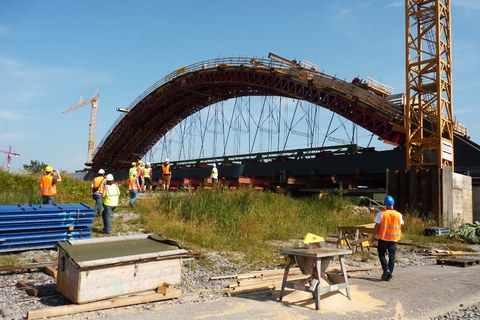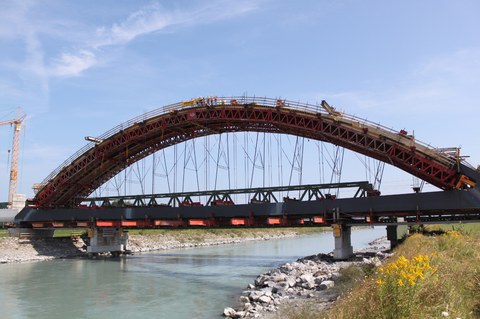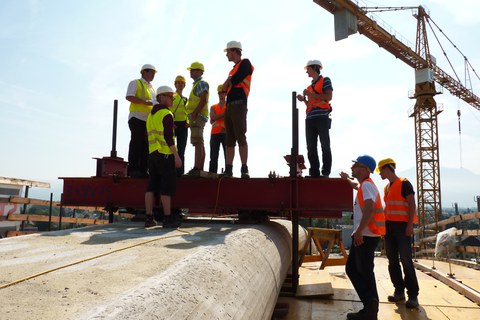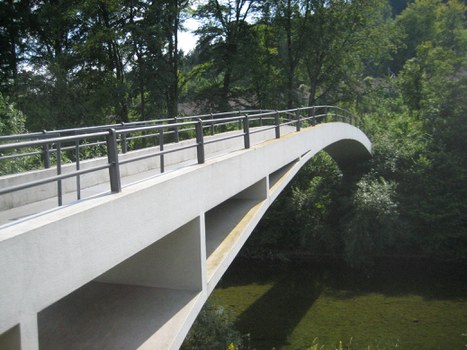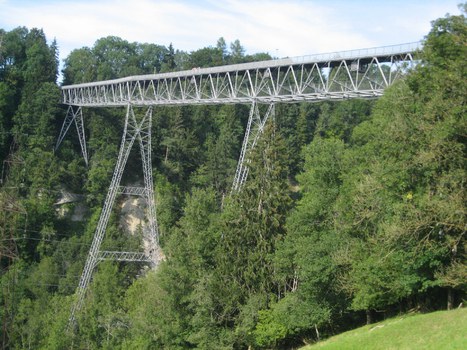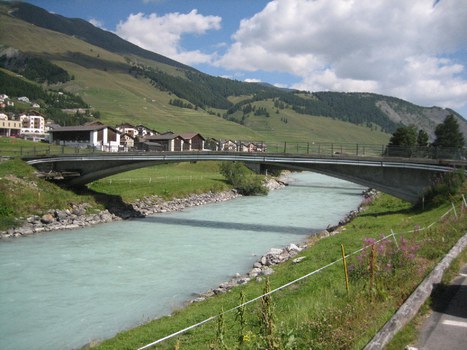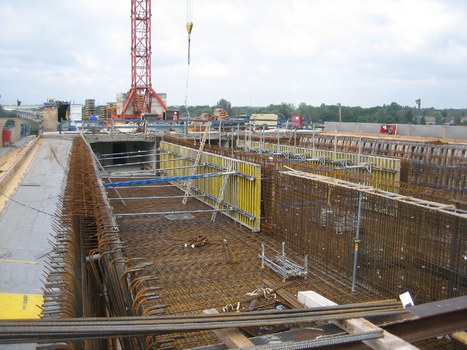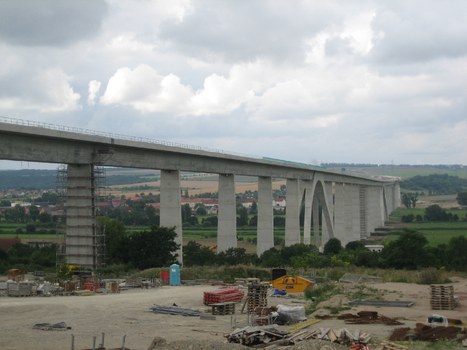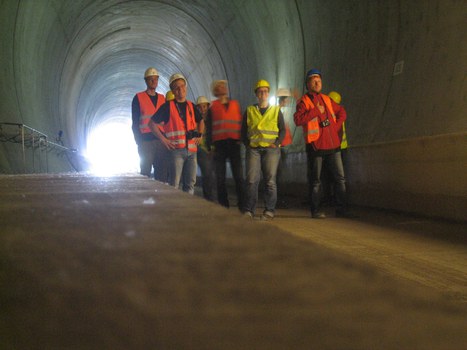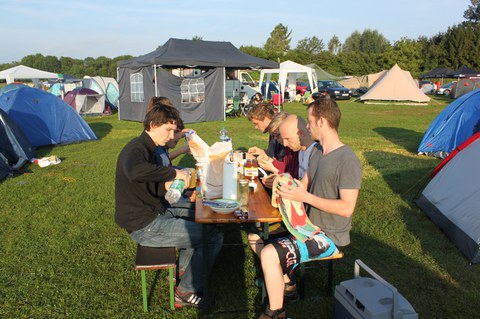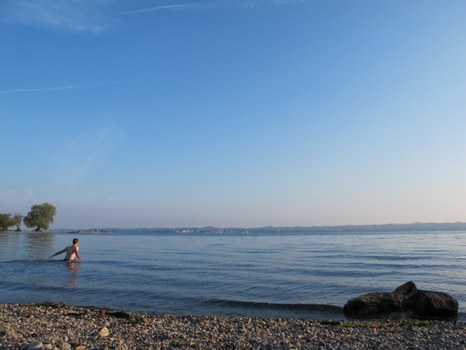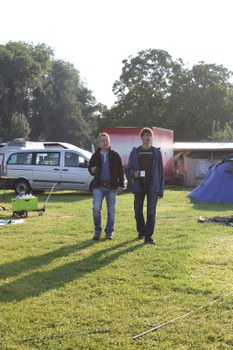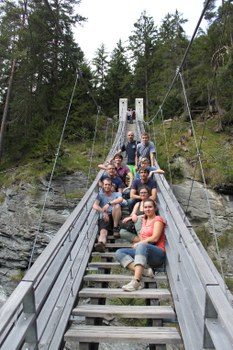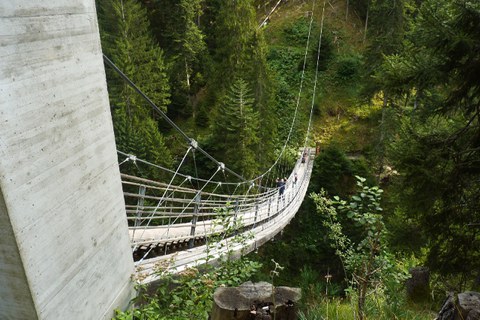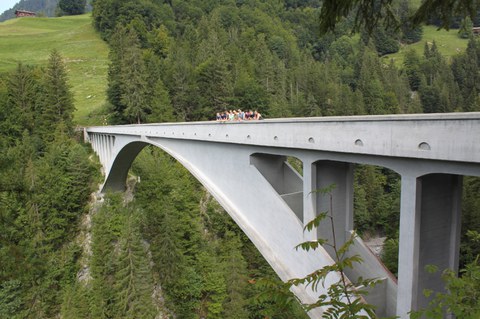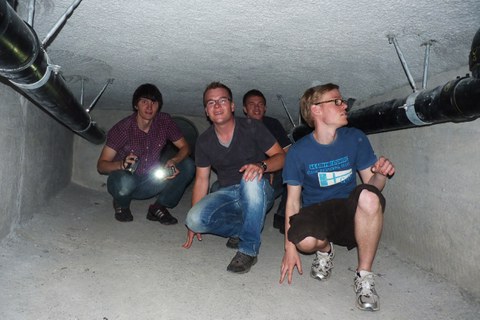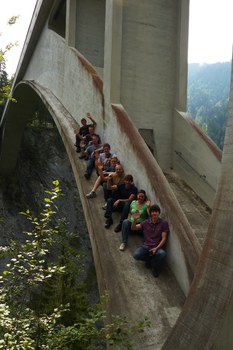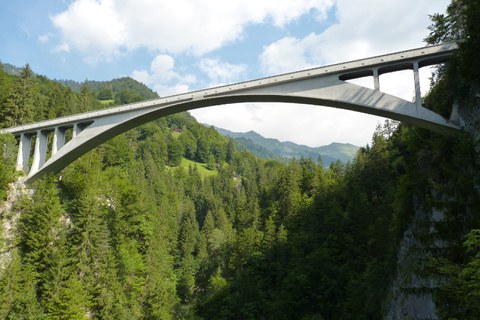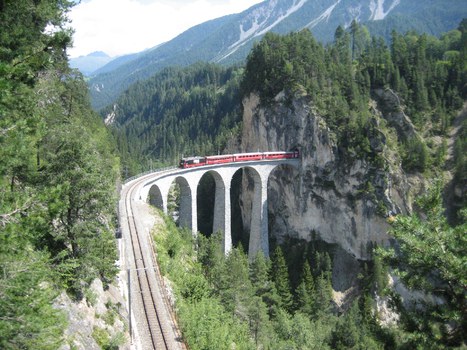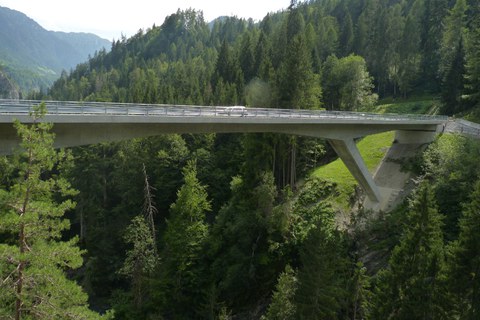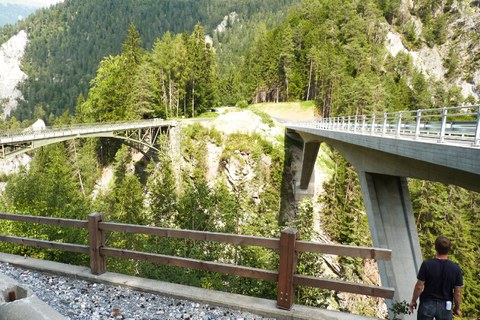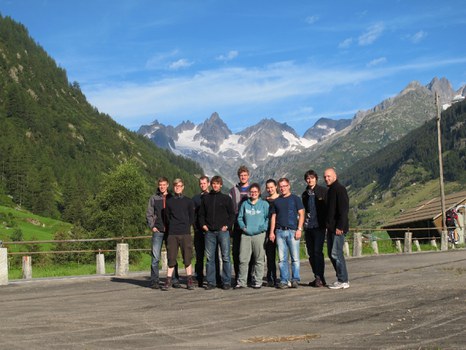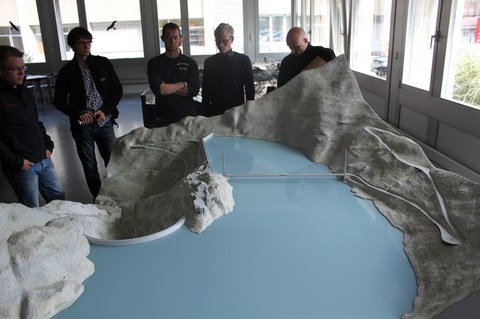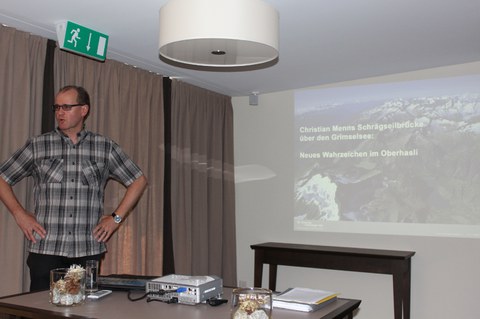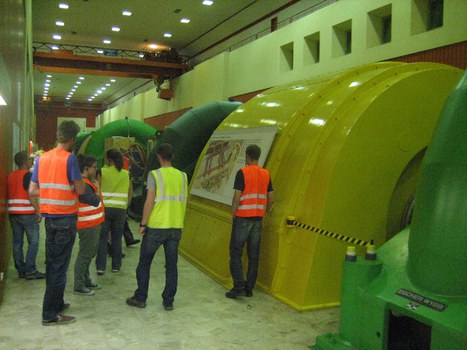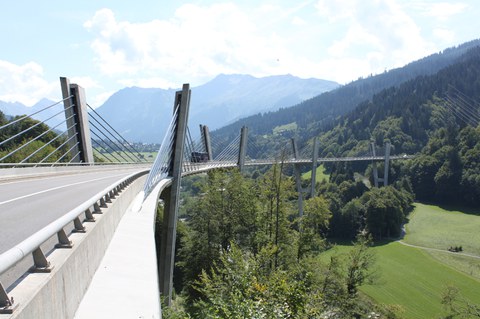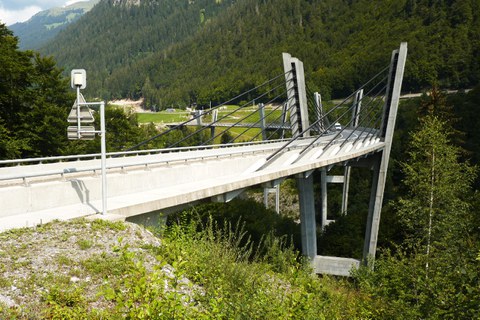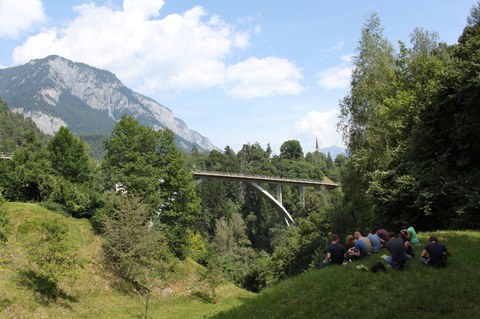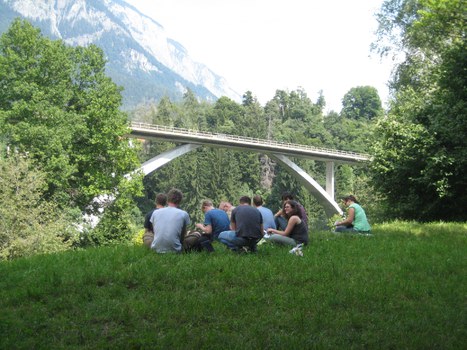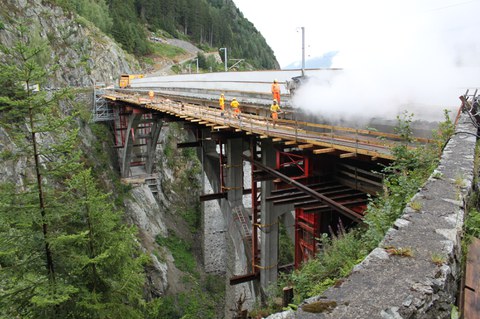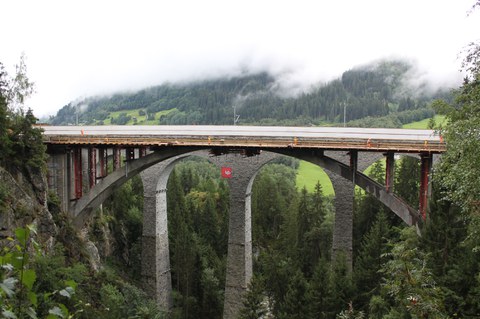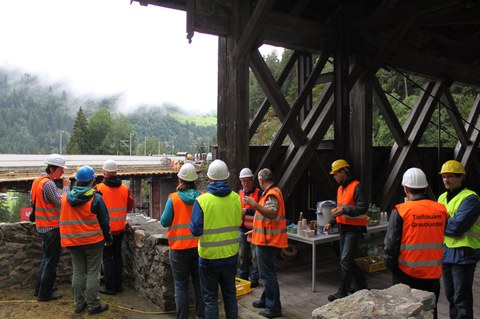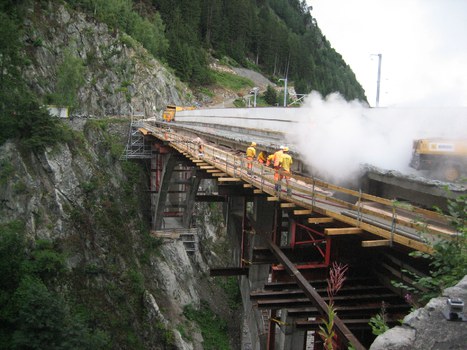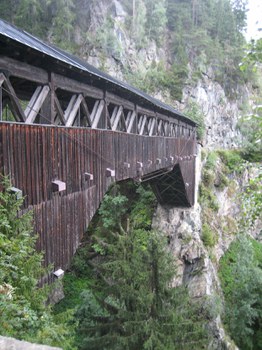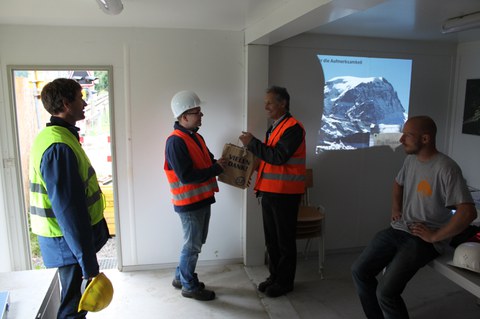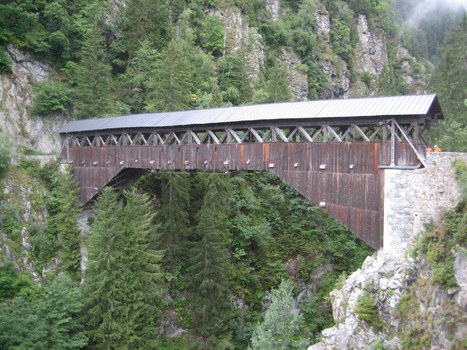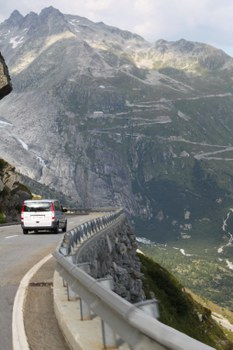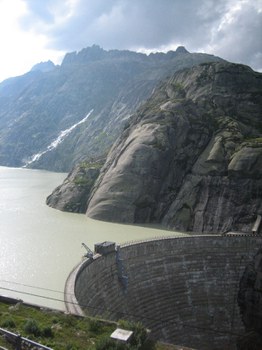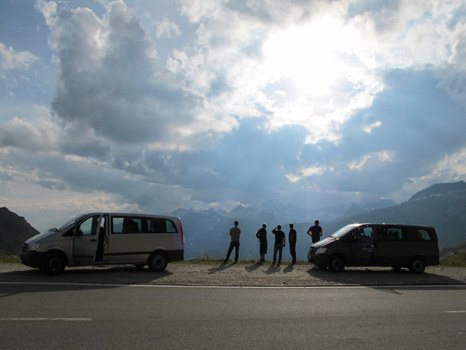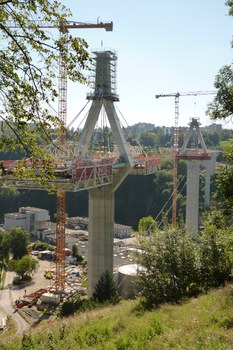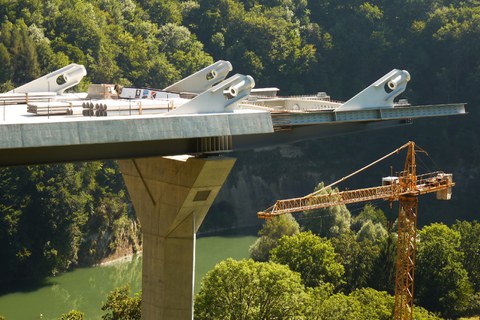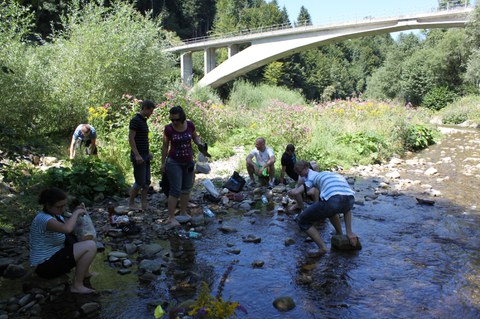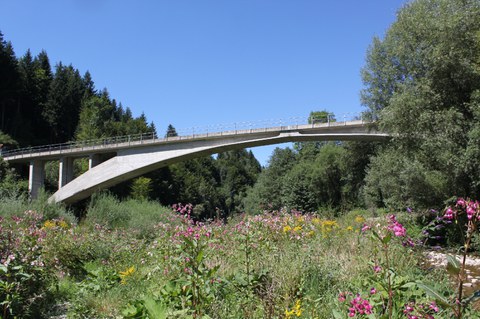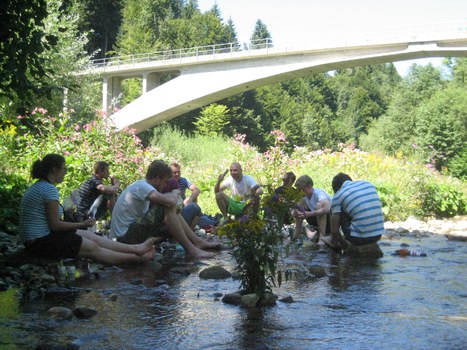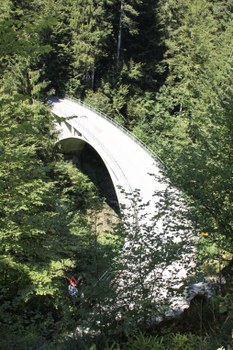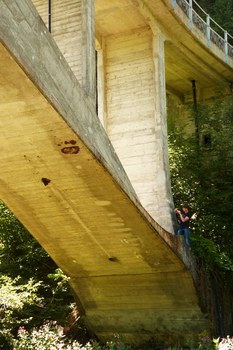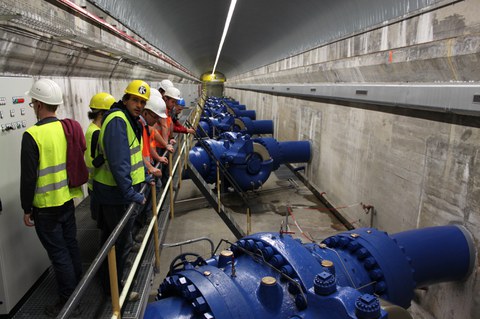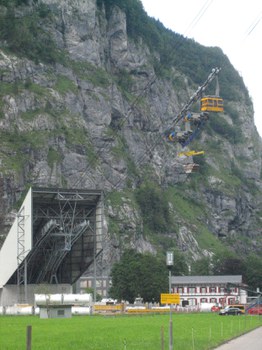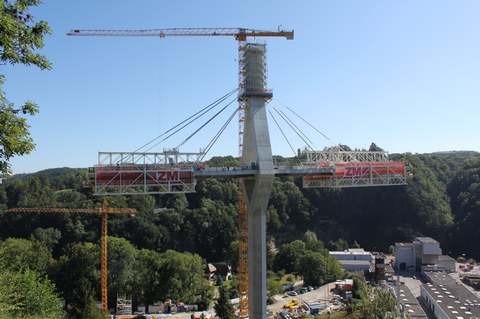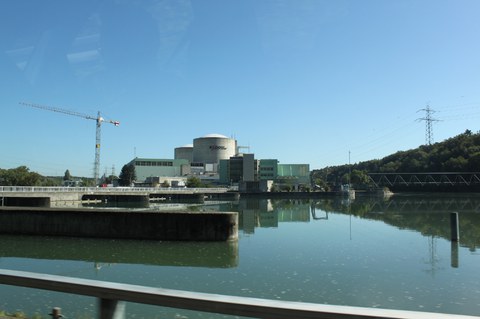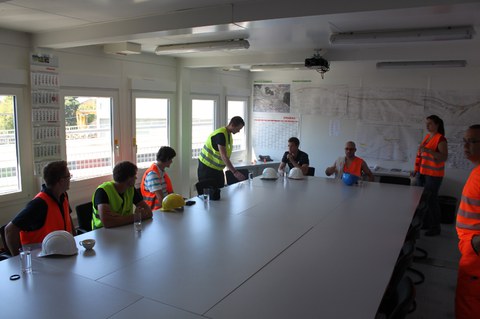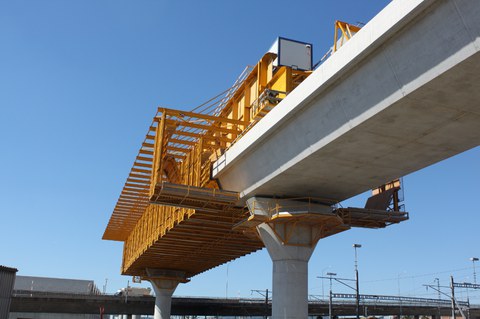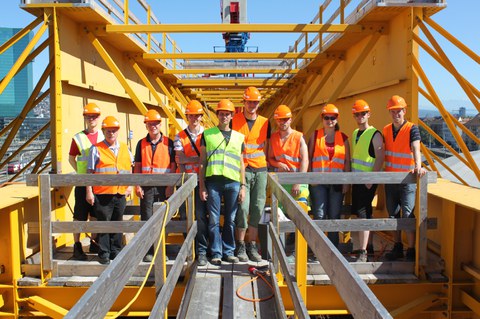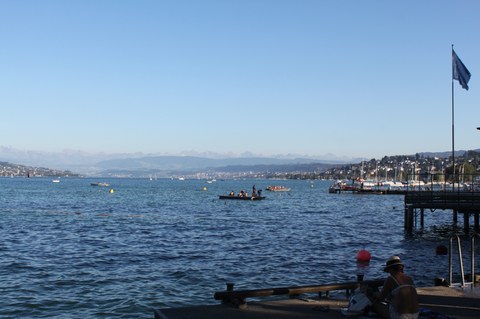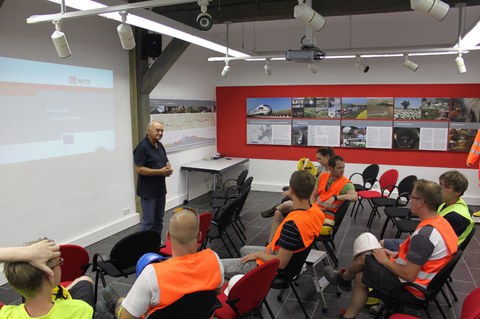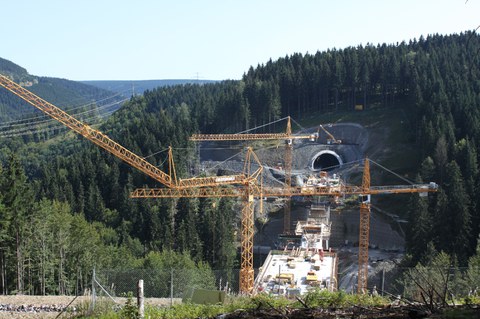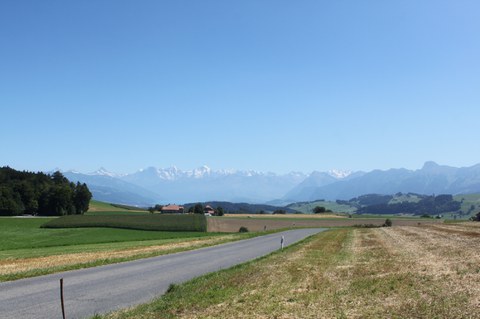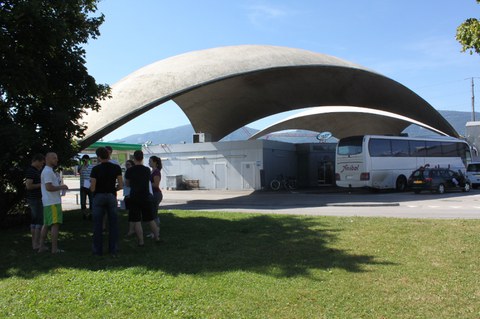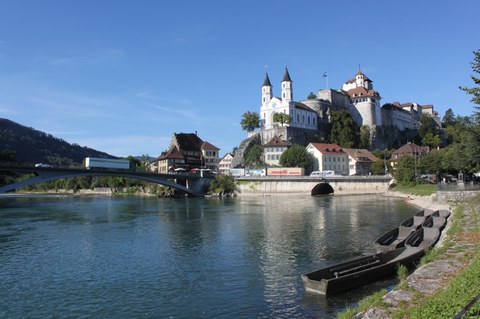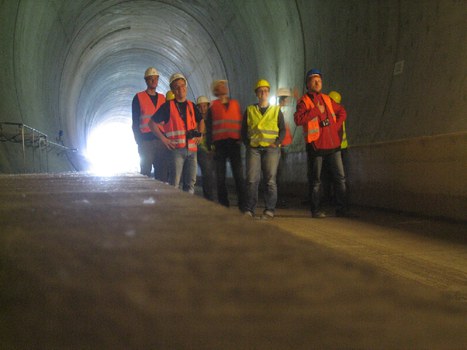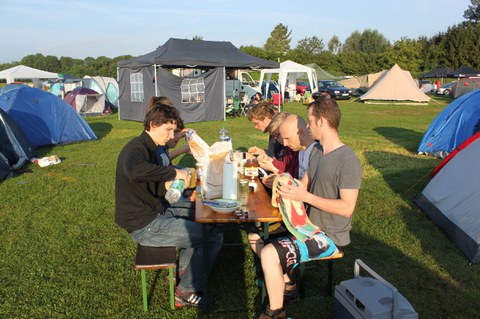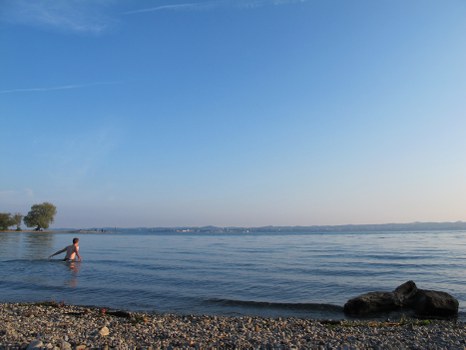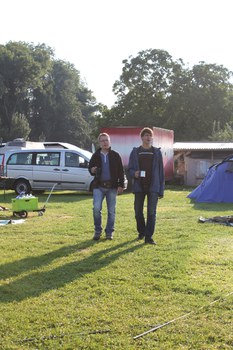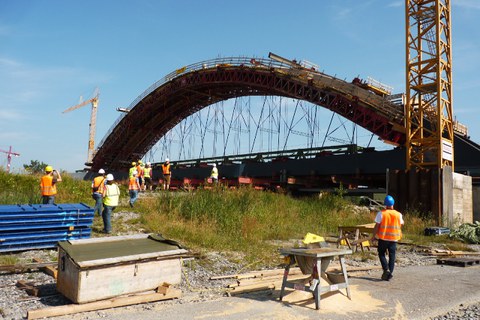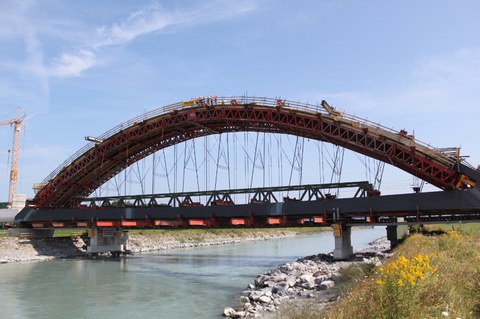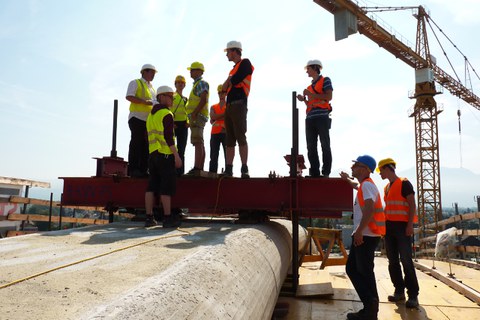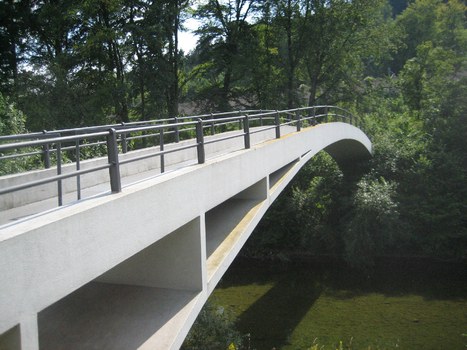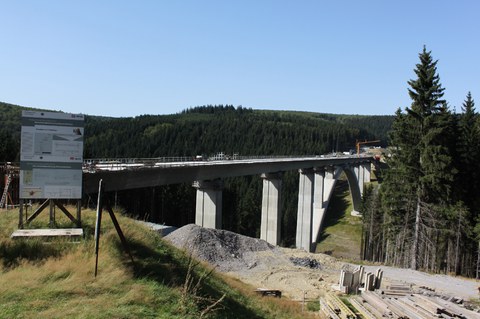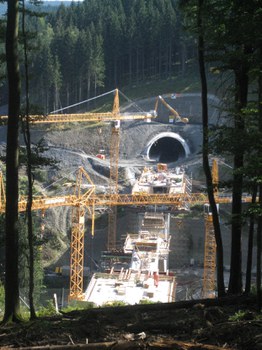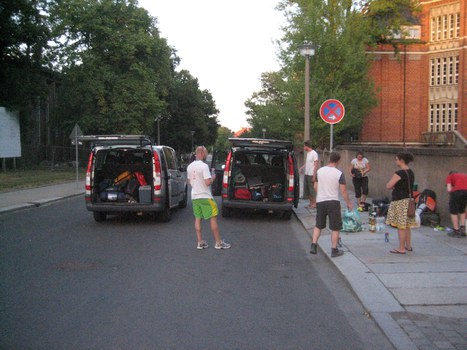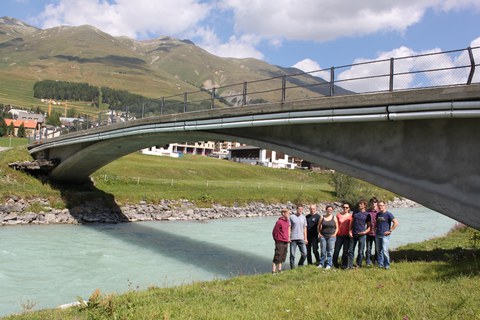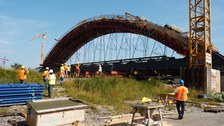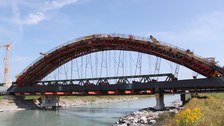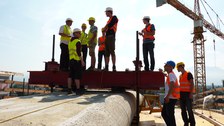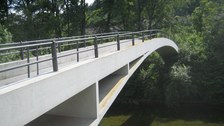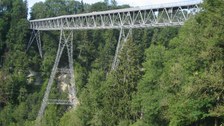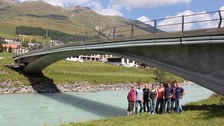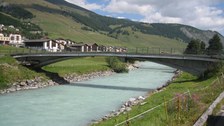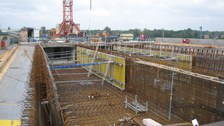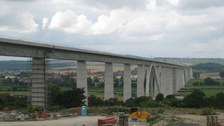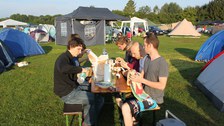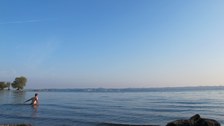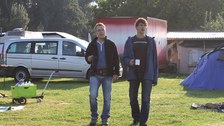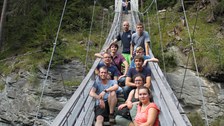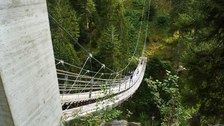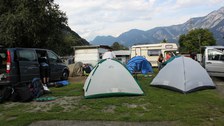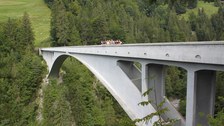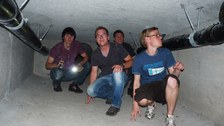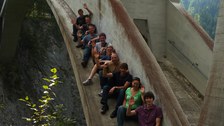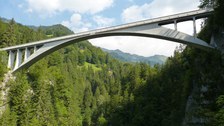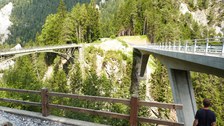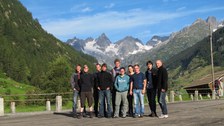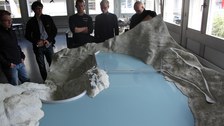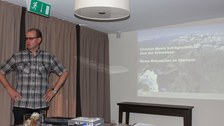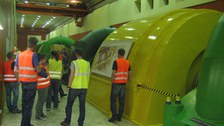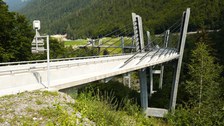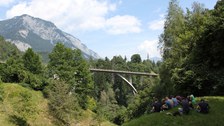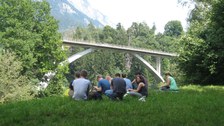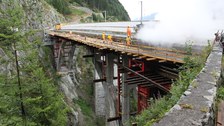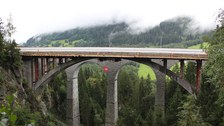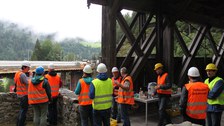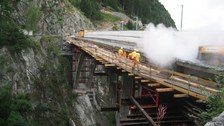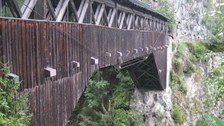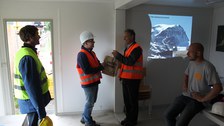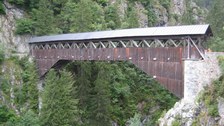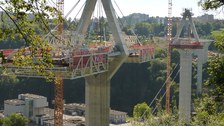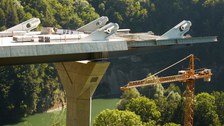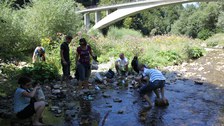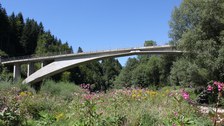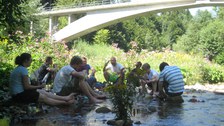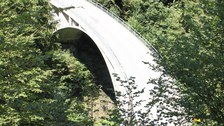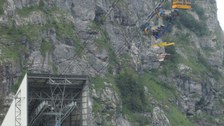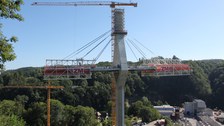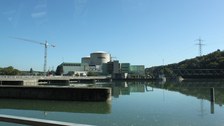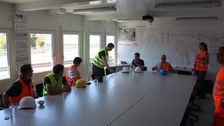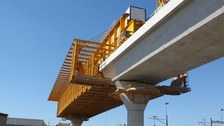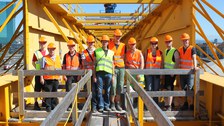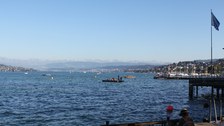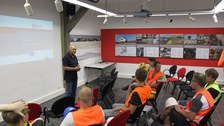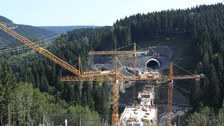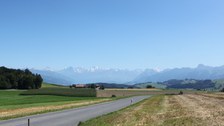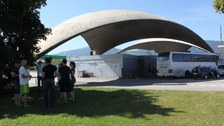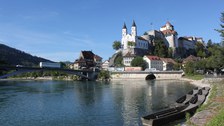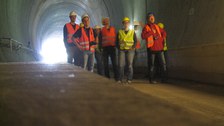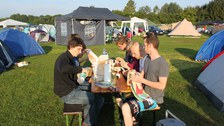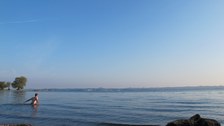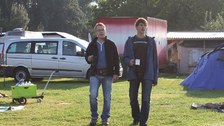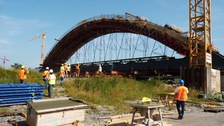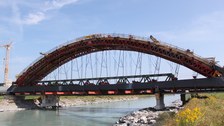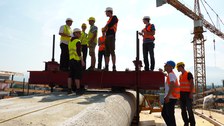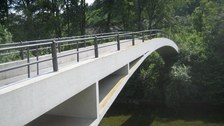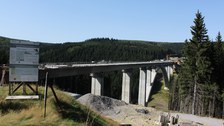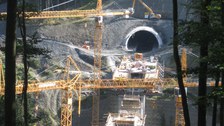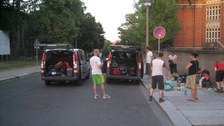Bridge building excursion 2012 - Switzerland
On the traditional bridge construction excursion of the Institute of Solid Construction, which this year led to Switzerland, some students of the 8th semester were able to deepen their acquired knowledge and experience the practical implementation first hand. The nine-day excursion led via northern to eastern Switzerland, further over the Alps to Bern and Fribourg, from where it went back to the north and via Zurich back to Dresden. The excursion activities started already on the way with guided tours of construction sites at the Saale-Elstertal and Unstruttal bridges, which are being built as part of the NBS of the German Railways, followed by a guided tour at a bar arch bridge of the Austrian Federal Railways over the Rhine, which is currently under construction. The canton of Graubünden offers a large variety of different bridge types and support systems. Statistically, there is a bridge on every kilometer of road network that needs to be maintained or newly built. Robert Maillart, probably one of the most famous civil engineers in the world, had a significant influence on the Graubünden bridge building culture in the first half of the 20th century and so the Töss Bridge, the Zuoz Bridge and of course the Salginatobel Bridge were examined and researched in detail. A second civil engineer who has left his mark on Switzerland's bridge-building culture to this day is Prof. Christian Menn. The Sunniberg Bridge designed by him was brought closer to the visitors in a lecture by Dipl.-Ing. Heinrich Figi, Civil Engineering Office Graubünden, and during a subsequent walk-through. But not only bridge structures were on the agenda. The phasing out of nuclear energy and the future security of energy supply are also of concern to Switzerland, which is why numerous pumped storage structures are being expanded or newly built to cover peak periods. In this context, Dr. Martin Deuring presented the Grimselsee project and the associated cable-stayed bridge over Lake Grimsel, designed by Prof. Christian Menn and currently in planning. In addition, the excursion participants were able to visit the cavern with the turbines of the pumped storage power plant located inside, which is accessible via a 3 km long access tunnel leading directly under Lake Grimsel to the power plant. A visit to the large construction site of the new Linth-Limmern pumped storage hydroelectric power plant and a visit to the Beznau nuclear power plant were also on the agenda. In the Russeinertobel, where a historic wooden truss bridge, a natural stone railroad viaduct and a reinforced concrete arch bridge from the 1930s are located directly next to each other, the excursion participants learned more about the challenges of expanding the existing infrastructure as a result of increasing road traffic. As part of the expansion of the road network, large parts of the superstructure of the existing arch bridge with elevated deck were demolished and the remaining part used as falsework for the new replacement structure. In western Switzerland, the field trip participants visited the construction site of the Pont de Poya, a reinforced concrete composite cable-stayed bridge through Fribourg, and observed the suspension of the foremost bridge section back to the pylon. A river walk along the Aare led to the Maillart bridges in the Rossgraben and across the Schwandbach. The tour then continued to the Isler bowls in Deitingen. Another highlight was the tour of the construction site in the course of the Diameter line at Zurich main station. Dr. Erich Borer and the site manager there, Mr. Brun, led a tour of the rail bridge built with feed scaffolding and explained the challenges of building a bridge over 40 tracks while the station was in operation. The circle was completed during a visit to the Goldisthal information center, where we were guided to bridges and tunnels of the DB NBS by one of the pioneers of the project, Dipl.-Ing. Hermann Schmalfuß. After eight nights on campsites and countless bridges, the prospective civil engineers reached their home on Sunday evening with many new impressions in their luggage and a few experiences richer: the Beyer-Bau.
Key data
- Duration: 11.08.2012 to 19.08.2012
- Participants: 10
- Kilometers traveled: 3515
- Bridges visited: 72
- bridges excited to swing: 8
- of which collapsed: 0
- How-do-you-feel rounds: 9
